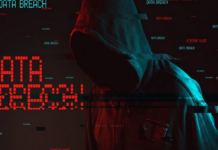Advanced Cyber Threats: The Rise of Rust-Based SysJoker Malware in Cyber Espionage
In the ever-evolving landscape of cyber threats, a new player has emerged, signaling a significant shift in the tactics of Advanced Persistent Threat (APT) groups. Recent findings by cybersecurity experts have unveiled the use of a sophisticated Rust-based backdoor, SysJoker, by a Hamas-linked APT group targeting Israeli entities. This development marks a concerning trend in the escalation of cyber warfare techniques.
Understanding SysJoker: A Multi-Platform Menace
Initially identified in December 2021 by Intezer’s security team, SysJoker stands out due to its ability to infiltrate a wide range of operating systems, including Windows, macOS, and Linux. This versatility poses a substantial risk, as it indicates the potential for widespread damage and data breaches across various platforms.
Rust-Based SysJoker: A Strategic Evolution
The variant of SysJoker used against Israeli targets demonstrates a notable evolution in malware development. Crafted in the Rust programming language, this version likely represents a complete overhaul of the malware, diverging from previous C++-coded variants. This strategic choice in language not only enhances the malware’s performance and security evasion capabilities but also suggests a commitment to developing more robust and resilient cyber-attack tools.
Adapting Tactics: Shifting from Google Drive to OneDrive for C2 Operations
One of the key features of SysJoker is its use of cloud services for command and control (C2) server communications. Transitioning from Google Drive to Microsoft OneDrive for hosting dynamic C2 URLs, the attackers exhibit an adaptability that complicates the efforts of reputation-based security services to track and neutralize the threat.
Information Harvesting and System Infiltration
Upon successful infiltration, SysJoker conducts a systematic data harvesting operation, collecting critical information such as the system’s Windows version, user credentials, and MAC address. This data is then transmitted to the malware’s C2 server, signaling the beginning of a sustained espionage campaign.
Continuous Communication: Maintaining Control Over Compromised Systems
SysJoker maintains a persistent link with its C2 server, regularly sending POST requests with a unique token. In response, the server dispatches JSON-encoded instructions, outlining the subsequent actions for the malware to execute. This continuous communication loop enables the attackers to dynamically control and manipulate the compromised systems.
Historical Context: Linking SysJoker to Past Campaigns
Check Point’s research draws parallels between SysJoker’s activities and the Operation Electric Powder campaign, which targeted Israel between 2016 and 2017. Attributed to the Gaza Cybergang, also known as Molerats or Gaza Hackers Team, this campaign showcased similar patterns and objectives. The Gaza Cybergang’s history of politically motivated cyber attacks dates back to at least 2012, with a noted increase in intensity around Q2 2015.
Emerging Variants: The Evolution of SysJoker
Further investigations have revealed additional, more complex SysJoker samples, underscoring the malware’s ongoing development. These newer iterations, coupled with SysJoker’s history and its ties to the Israeli-Hamas conflict, highlight the malware’s role as a significant tool in cyber espionage and warfare.
The Future of SysJoker: Implications and Expectations
The meticulous rewrite of SysJoker from C++ to Rust not only represents a strategic enhancement but also paves the way for future adaptations and improvements. As cyber threats continue to evolve, understanding and anticipating these developments becomes crucial in the global effort to maintain cyber security and resilience.
In conclusion, the emergence of Rust-based SysJoker by a Hamas-linked APT group against Israeli entities is a stark reminder of the dynamic nature of cyber threats. It underscores the need for continuous vigilance and advanced security measures in the face of increasingly sophisticated and politically motivated cyber attacks.
Dimitris is an Information Technology and Cybersecurity professional with more than 20 years of experience in designing, building and maintaining efficient and secure IT infrastructures.
Among others, he is a certified: CISSP, CISA, CISM, ITIL, COBIT and PRINCE2, but his wide set of knowledge and technical management capabilities go beyond these certifications. He likes acquiring new skills on penetration testing, cloud technologies, virtualization, network security, IoT and many more.






